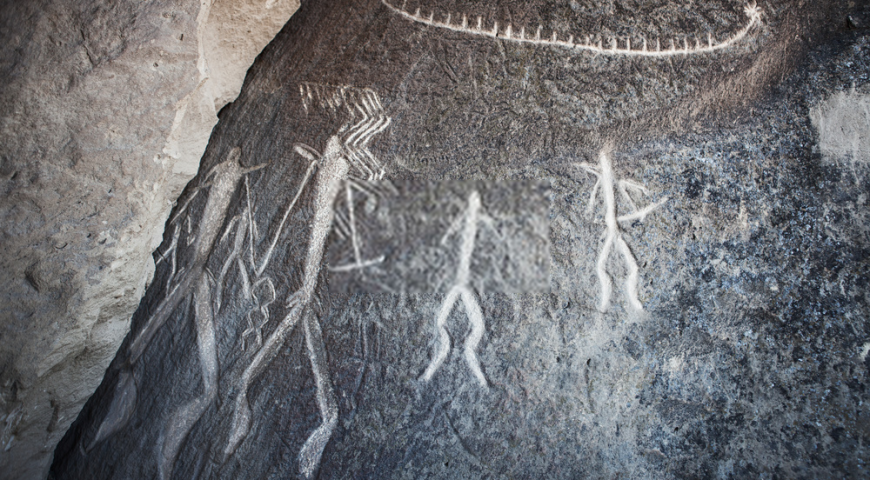
GOBUSTAN
Das Gobustan State Reserve westlich der Siedlung Gobustan, etwa 64 km südwestlich des Zentrums von Baku, wurde 1966 gegründet, als die Region zum nationalen historischen Wahrzeichen Aserbaidschans erklärt wurde, um die alten Schnitzereien, den Schlamm, zu erhalten Vulkane und Gassteine in der Region.
Das Gobustan State Reserve ist sehr reich an archäologischen Denkmälern. Das Reservat verfügt über mehr als 6.000 Felszeichnungen, die primitive Menschen, Tiere, Kampfstücke, rituelle Tänze, Stierkämpfe, Boote mit bewaffneten Ruderern, Krieger mit Lanzen in den Händen, Kamelkarawanen usw. darstellen. Bilder von Sonne und Sternen im Durchschnitt aus 5.000 bis 20.000 Jahren.
Gobustan State Historical and Cultural Reserve acquired national status in 2006. As a part of the 31st Session of the UNESCO World Legacy Committee held in Christchurch, New Zealand on June 23 – July 2, 2007 included within the World Social Legacy List.
Gobustan Petroglyph Museum. The construction of museum was financed by Azerbaijani Ministry of Culture in 2010. The museum was designed and constructed by Latvian “El Studio” Ltd. The museum was opened on 26 December 2011.
The museum’s exhibition hall consists of various sections. The section “Gobustan: UNESCO World Cultural Heritage” provides information about 200 similar monuments around the world. The museum has a 3D cinema hall for 45 seats. It is equipped with 7 sound amplifiers, monitors and projectors. The meeting room has all conditions for holding a variety of conferences, events of national and international importance.
The museum’s permanent exhibition includes 12 rooms which displays and highlights the significance of the history of Gobustan petroglyphs.
The museum received a special European Museum Forum award in 2013.

